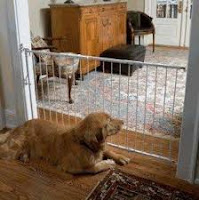So I want to tell you lovely people of the world about dog trainers. This is how we work. This is what we do. This is how we do it. Every day. I'm fairly certain I speak on behalf of many, if not all, dog trainers that do this as a full-time job (and even those that do it part-time!).
We care about you.
We care about your dogs. This is why we do it.
We move our schedules around to accommodate for our lesson with you.
We read your info, we take notes and we plan on how to help.
We drive however far we plan to in order to get to you.
We work with you to the best of our ability, attempting for more than that.
We go home and think about you, about your dog.
We lay in bed at night and think "Oh man! I should have told her this!" "Oh my gosh! What about that?!"
We rub shampoo in our hair the next day while we shower and we think "Oh no, what if she didn't like that advice?!" "I totally need to email her and tell her to do this!"
If we get an email or phone call from an upset client we ramble in our brains how to help.
We toss and turn at night trying to pin-point what went wrong. How could we have done better?
We rush home from lunch to find a time to get back to that email or follow up on that phone call.
We thrash around things in our brains "Oh no! Fluffy I was sure was doing great. What happened? What did I do wrong? Oh I forgot that piece of advice to give! Crap! I didn't shoot that handout off to her!"
We brain storm more. We stuff that sandwich in our mouth. We re-heat the coffee cup (for the 3rd time).
We look in our brains for ways to give better help, better advice.
We look in our brains for ways to give better help, better advice.
We look for an open spot in our schedule to get to your house quickly.
We lay in bed that night, again, and hope that day's advice is helpful.
We wonder if things are working out as planned.
We wonder if you'll leave a good review on Yelp or Facebook or tell your vet about us.
We wonder if you'll write a nasty email because we weren't good enough.
We wonder if you'll follow through and email us if you are struggling.
We smile at the success-in-progress emails you send us! (These are our favorites!)
We hope to receive emails with questions, if you have any. (We love these too!)
We cry when we receive the hard emails, the hard cases.
We cry when you cry.
We cry when we can't help. (We cry a lot!)
We cry when you are unsatisfied.
We cry more when we get nasty emails.
We feel like failures, sometimes more than we should.
We love your dogs.
We look at our schedule and smile "Oh! I get to see Fluffy today!"
We like margaritas. (Ok at least I do!)
We like to laugh.
We like to make you laugh.
We love how much you love your dog.
We love that you called us!
We love that you want what is best for Fido.
We want what is best for Fido too!
We love the work you put in, and we put in, and Fido puts in, every single day.
We love the product of everyone's work!
We love your dogs.
We look at our schedule and smile "Oh! I get to see Fluffy today!"
We like margaritas. (Ok at least I do!)
We like to laugh.
We like to make you laugh.
We love how much you love your dog.
We love that you called us!
We love that you want what is best for Fido.
We want what is best for Fido too!
We love the work you put in, and we put in, and Fido puts in, every single day.
We love the product of everyone's work!
We wake up. We do it again. And again. And again.
We go through everything you do whether your job is a mother, a painter, a lawyer, a doctor, a plumber, an engineer, an artist, a teacher, a therapist, a truck driver ... Our job is full of difficulties and successes, just like yours is. It's full of joy and happy endings. It's full of tears and sad endings sometimes too. It may be full of more slobbers and hair than yours is but it's still just like your job in so many ways.
This is a dog trainer. .... I wouldn't have it any other way!








